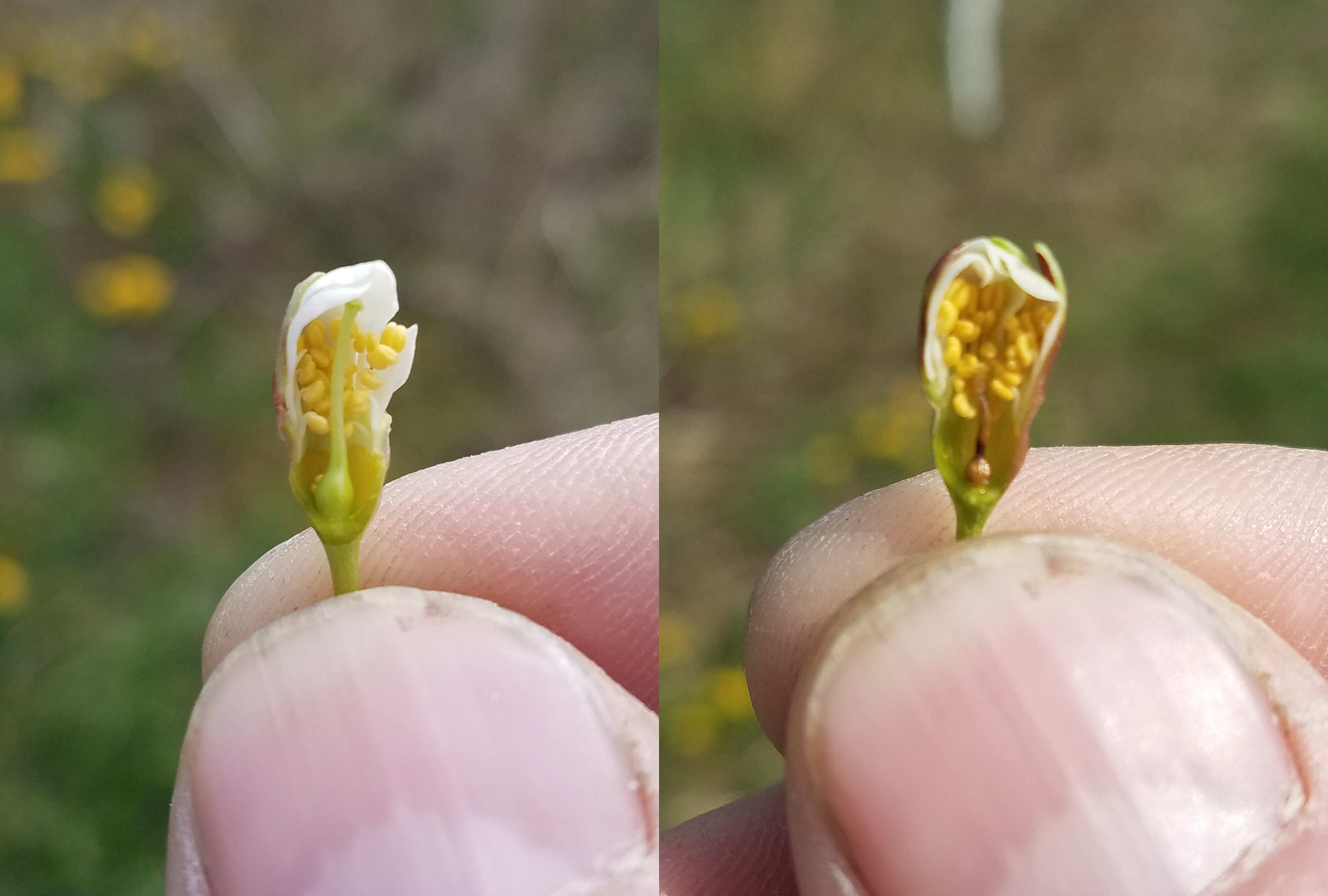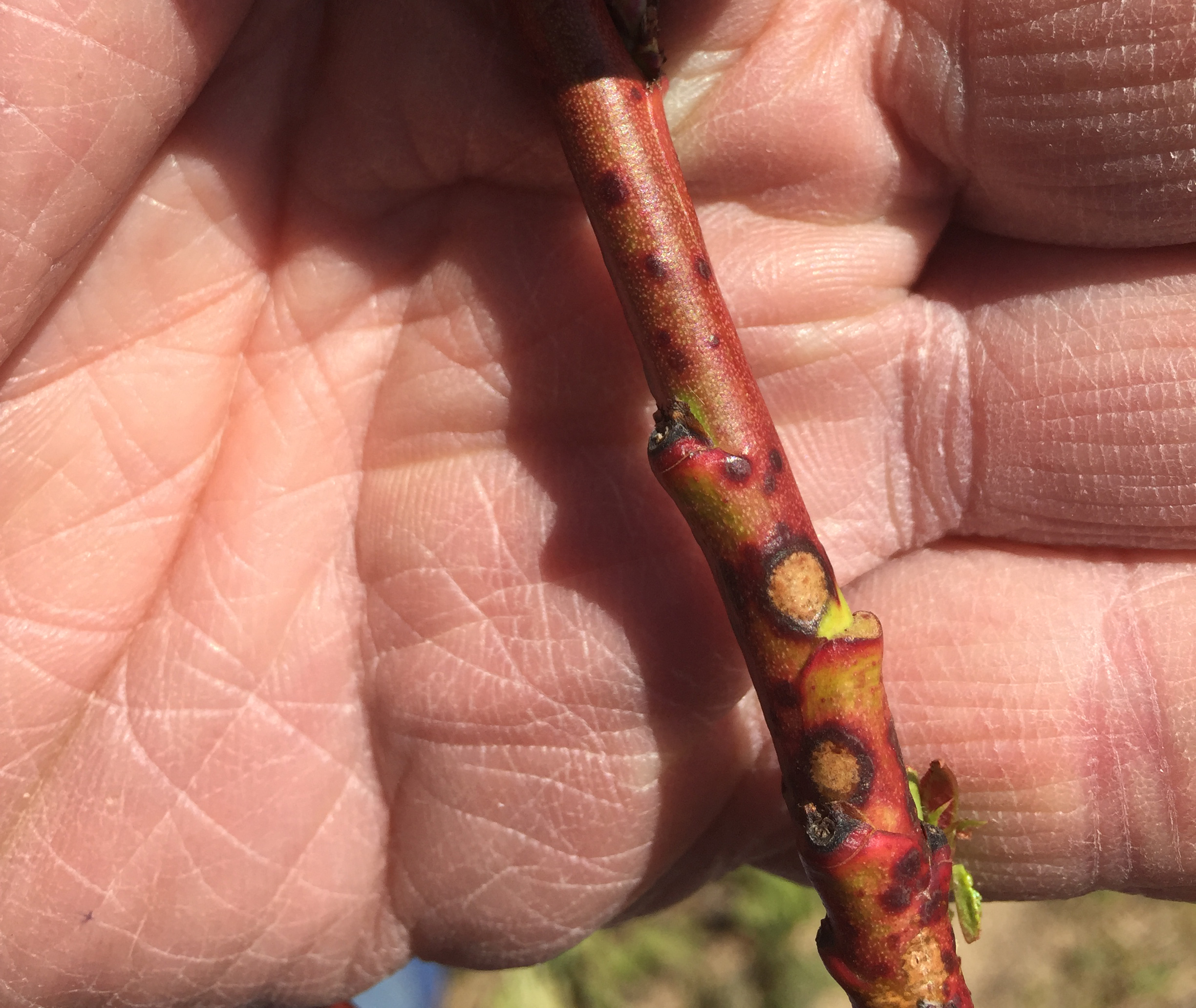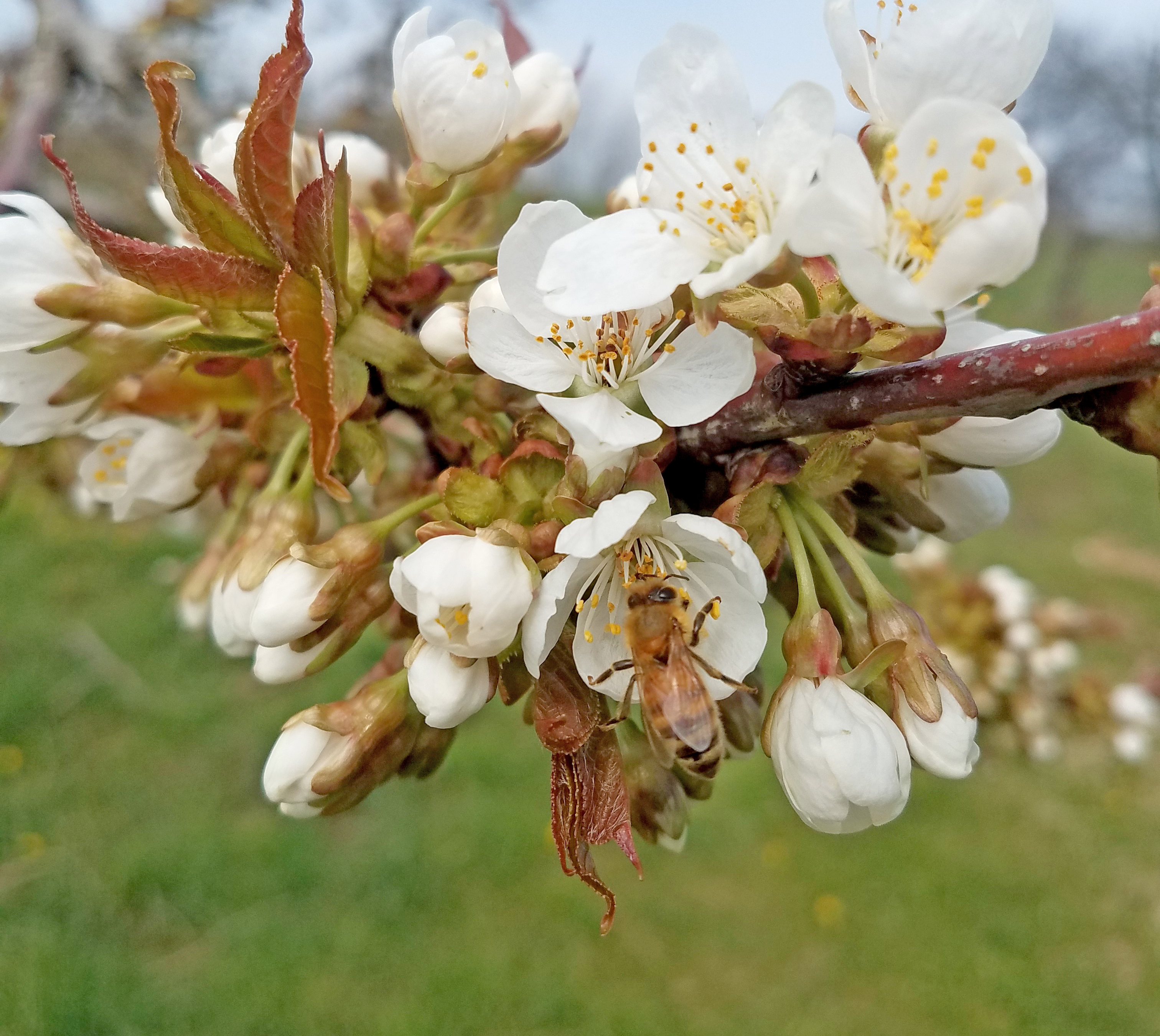Southwest Michigan fruit update – April 28, 2020
Freezes last week caused little additional damage to fruit crops. This week will be cooler with rain for the next few days.

Weather
Last week was cold and windy with highs in the 40s and 50s for most of the week. There was a hard freeze on Wednesday April 22, with lows from 22 to 28 degrees Fahrenheit. We do not expect any additional damage following the freeze of Thursday, April 16, when lows were from 19 to 25 F. Last week was relatively dry with scattered showers on Wednesday but Friday brought a long steady rain which lasted into Saturday. This rain was an infection event for apple scab and other diseases and dropped 0.67 to 0.75 inches of rain across the region. Sunday was sunny and highs were in the upper 60s.
With cool weather, we only picked up 27 growing degree days (GDD) base 42 and 7 GDD base 50. Last week was twice as warm as the week before and most of that heat came on Sunday. Plants are moving slowly.
The forecast for this week is for cool, wet weather with highs in the 50s and lows in the 40s. There is little danger of a freeze. A cold front will drop temperatures and bring rainy conditions for most of the week. We expect clearing on Friday and a warmer weekend with highs in the 60s with a chance of showers. Cooler than normal conditions will continue into early May.
|
Southwest Michigan GDD summary from March 1 – April 26, 2020 | |||
|---|---|---|---|
|
Station |
GDD 42 F |
GDD 45 F |
GDD 50 F |
|
Benton Harbor (SWMRC) |
193 |
132 |
63 |
|
Lawton (Lawton) |
197 |
135 |
64 |
|
Fennville (TNRC) |
152 |
98 |
39 |
|
Average for the SW region |
193 |
132 |
63 |
|
Average last week |
166 |
116 |
56 |
Frost/freeze information
Freeze damage depends on the susceptibility of the bud or flower, which increases as the bud develops. There were several hard freezes in the last two weeks. The worst were on Wednesday, April 22, with lows from 22 to 28 F and Thursday, April 16, with lows from 19 to 25 F. The wide range in temperatures indicate these were radiation freezes under still conditions with cold air settling into low areas. Warmer lows occurred at the tops and on the slopes of hills. Temperatures were also warmer for many locations closer to Lake Michigan than similar sites further inland.
Conditions varied a lot between different sits as to when the wind died, and the coldest temperatures occurred. Blooming fruit crops were hurt, but we are finding live buds and flowers, especially in better fruit sites. We will know more after we have looked at the buds and fruit in many orchards and sites over the next few weeks. Apples, blueberries and peaches do not appear to be seriously hurt in most areas and grapes were not hurt. See reference tables of the critical temperatures and the damage to different fruit. This table is also available as a PDF. We do not anticipate lows this week as low as last week and little if any additional damage.

Tree fruit
Apple, pear and cherry development has been very slow over the past two weeks. There is still time to set up mating disruption for oriental fruit moth in peaches and apples before they begin flying and mating. Redbanded leafroller flight will begin soon.
Apricot bloom is ending. Apricots were hurt by the recent hard freezes but there are still viable blossoms in good sites in Berrien County, especially on late blooming varieties.
Peaches and nectarines are at 50% bloom in early blooming varieties and pink on the rest at the Southwest Michigan Research and Extension Center. Bloom will open quickly with the next warm spell. Fruit bud density is high this year due to the low crop in 2019. Damage from the freezes was light in the good sites, especially on hills with good air drainage.
Peach scab lesions are easy to find on twigs of susceptible peach varieties in part due to little or no applications of brown rot fungicides last year in orchards with no crop. Control of this disease is aimed at fungicides to protect fruit starting at shuck split. Low levels of copper from early spring to early shuck split are useful in suppressing bacterial spot populations. When using copper, be sure to monitor for phytotoxicity.

The average bloom date for peaches in central Berrien County is about April 27. The cool weather has suppressed flight of oriental fruit moth. Pheromone disruption for oriental fruit moth should go out soon. We expect biofix at 175 GDD base 45, which could be next week if the weather warms up.
In cherries, sweet cherries are from tight cluster to first bloom. Freeze damage is significant with less damage in good sites. Montmorency tart cherry are at bud burst and tight cluster and freeze injury is widespread. Brown rot management is important when warm temperatures and moisture occur together during bloom. It has not been warm enough for this disease. Infection seems unlikely in the next few weeks.

In plums, Japanese plum bloom continues. Open flowers were killed by the freezes, but new flowers are opening. With the cool conditions, there are big differences in bloom timing between varieties. Japanese plums have a dense bloom with lots of flowers on the tree. We need to wait for pollination and early fruit development to see the crop. European plum buds are white bud. Early varieties have just started bloom and would be damaged by 28 F. European plums bloom about April 29. Brown rot protection is needed during bloom. Growers need to prune out black knot and dispose of the knots by burning or removing from the orchard. Sanitation is very important in managing this disease.
Apple buds are at tight cluster. Freeze damage has been light with a lot of variation between sites and varieties at the same site. Growers need to maintain their sprays to control apple scab. The wet forecast for the week could mean multiple infection periods. Scab infection periods have varied greatly across the area since late March. Symptoms from the March 27 infection period in central Berrien County should start showing up now.
We have had multiple wetting periods in April but very few actual scab infection periods. The Friday-Saturday rain was a scab infection for most of the region. Scab ascospores are being caught during rains in Berrien County. We are still early in the scab season, only 40% of the spores have matured and about 15% discharged. Apple scab spore discharge peaks during apple bloom. Apples normally bloom the first week in May in southwest Michigan.

Pears are at open cluster to first white. Temperatures below 28 F would cause injury. Pears normally bloom at the end of April. Pear scab is the primary disease concern now. Pear psylla are out.
Small fruit
Grapes are still in early bud swell. We do not expect any damage to grapes from recent freezes or winter cold. There is still time to apply dormant sprays for early season disease control.
Blueberry flower buds are opening. Depending on the site and variety, we are at bud burst to early pink bud. There was a little freeze damage to the most advanced buds in cold sites. See “Blueberry Growth Stages,” with descriptions and estimates of the critical temperatures for each bud stage. Vegetative shoot buds have green tissue showing and mummy berry mushrooms (apothecia) are out. Rains can lead to mummy berry shoot strike infections and growers should be applying controls. See “Mummy berry has returned and new products are available for control.” Blueberries normally bloom the second week in May.
 WEB.jpg?language_id=1)
Strawberry leaves are emerging from the crown. The flower trusses are still in the crown. Overwintering mulches should be raked between the rows.
Bramble leaves have unfolded and shoots are growing.
Currents leaves are out.
Cranberries still look dormant; the beds have not begun to green up yet.
Upcoming meetings
Our grower meetings are moving online via Zoom. You will need to register for these meetings. Do not expect to be able to join these meetings just before they start. These meetings will be closed and many will be password protected to prevent their disruption by others.
For information on Zoom and how to join and participate in meetings, the following articles are very helpful: Instructions for fruit growers on downloading Zoom for online webinars and How to join and participate in the spring tree fruit Zoom webinars.
- Our regular southwest Monday Fruit IPM Updatesare available online. Our next meeting is Monday, May 4, at 5:30 p.m. You do need to register to receive the login and password for these meetings. The webinars are free and one pesticide applicator credit is available for each meeting.
- A pre-bloom blueberry meeting is planned for May 12. The agenda and registration information will be released soon.
Related articles
- Freeze damage depends on tree fruit stage of development
- Critical Spring Temperatures for Tree Fruit Bud Stages
- 2013 bloom dates for southwest Michigan tree fruit crops
- What are radiation freezes?
- Using Enviro-weather’s regional overnight temperature report during cold events
- Early insect control with horticultural oils
- Use fungicides for apple scab protection prior to anticipated early infection periods
- SDHI fungicides for apple scab management
- There is still time for dormant sprays in grapes
- Scouting and management of mummy berry in blueberries
- Mummy berry has returned, and new products are available for control



 Print
Print Email
Email




